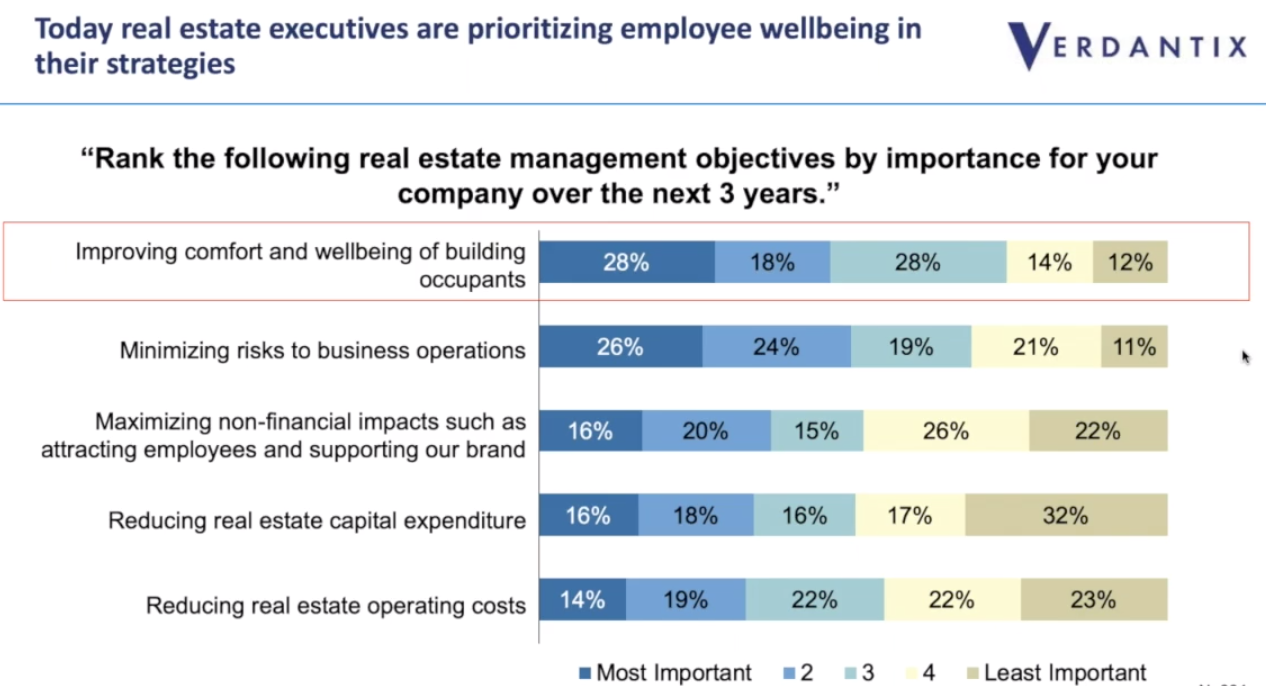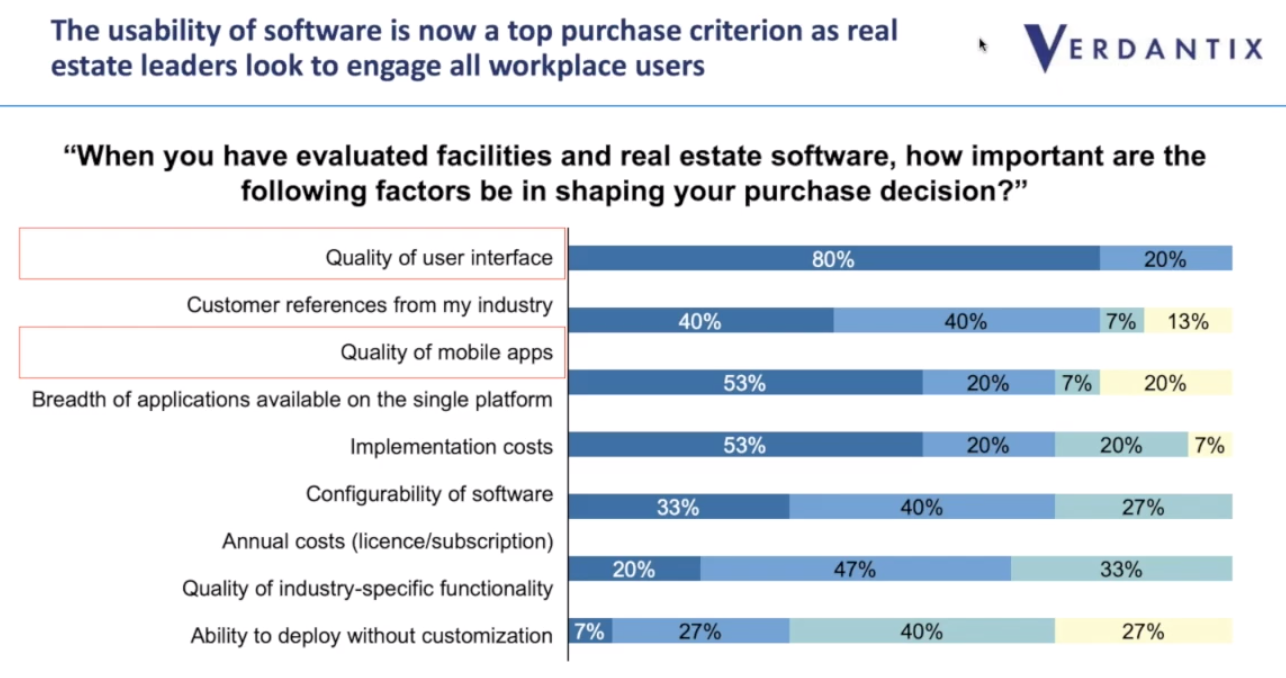Verdantix Analyst: The Surprising Technology CRE Leaders Are Embracing


Today’s corporate real estate leaders and the buildings they manage have a new mission.
Rather than focusing solely on operational efficiency and energy management, they are turning their attention to the occupant experience, said Susan Clarke, principal analyst of leading technology analyst firm, Verdantix.
Clarke discussed these changes and what they mean for future technology investments in a recent webinar. (We highly recommend watching the recording in case you missed it.)
Here are a few key takeaways.
Today’s Top Corporate Real Estate Priorities
Prior to 2017, Clarke and her research team consistently heard that improving cost management was their key priority. Then, about two years ago, they saw a significant shift away from cost reduction in favor of more holistic improvements that benefit the workforce. Today, as the struggle to attract and retain top talent intensifies, “employee engagement is one of the hottest topics in real estate management,” she said.
In fact, in a global panel of over 300 real estate and facilities directors, nearly a third of respondents said improving employee/occupant comfort was their top priority over the next three years.
It’s interesting to note where other corporate real estate priorities have fallen in relation to this one. Verdantix research shows reducing expenditures and reducing operating costs are now at the bottom of the list, following minimizing risks and maximizing non-financial impacts such as attracting employees and supporting the brand.

Executives are recognizing the correlation between employee engagement and productivity and retention. They are looking for ways to improve engagement through their corporate real estate management strategies. They are also looking to minimize the potential negative impacts of cost-reduction measures, such as maximizing space utilization, Clarke said.
The Shift in Workplace Technology Investments
This shift in priorities is reflected in corporate real estate technology investments. Where CRE leaders previously focused much of their budgets on technology that maximized space utilization and energy efficiency, today they are investing in technology that improves occupant comfort. That includes air quality sensors as well as services that improve employee autonomy, such as kiosks, room booking software and digital workplace assistants. These voice-activated assistants are already familiar to many of us in our homes, but they’ve started to make an appearance in our workplaces, helping to schedule meetings, reserve rooms or find resources quickly.

The desire to elevate the workplace experience is also changing what corporate real estate leaders are looking for in their software. While one in five CRE leaders is evaluating workplace management software—including IWMS or CAFM software— they want these systems to have an exceptional user interface in addition to robust functionality.
In fact, 80% say the quality of the user interface is their top priority.
As one executive for Travel and Transport put it:
“Uber has become our benchmark. Our firm wants a very simple app-style interface for our facilities management solution so you can quickly search and see the location of everything.”
Why The Market Demands New Workplace Technology
Unfortunately, the user interface for most traditional IWMS software is dated—a challenge for leaders evaluating their options.
In addition, traditional IWMS software was designed to reduce the total cost of ownership, but over the years, these primarily on-premise systems have become so complex that they’re expensive to develop, deliver and upgrade. This makes it more difficult to achieve a positive return on the investment.
iOFFICE shatters the inherent limitations of the traditional IWMS with a new system build with the workplace experience at the center. Its cloud-native infrastructure and open API give workplace leaders the ability to be ready for what Gartner refers to as the “continuous next.”
To learn more about our integrated experience management system (iXMS) and how it can help you keep up with the changing demands of the modern workplace, download our whitepaper.

